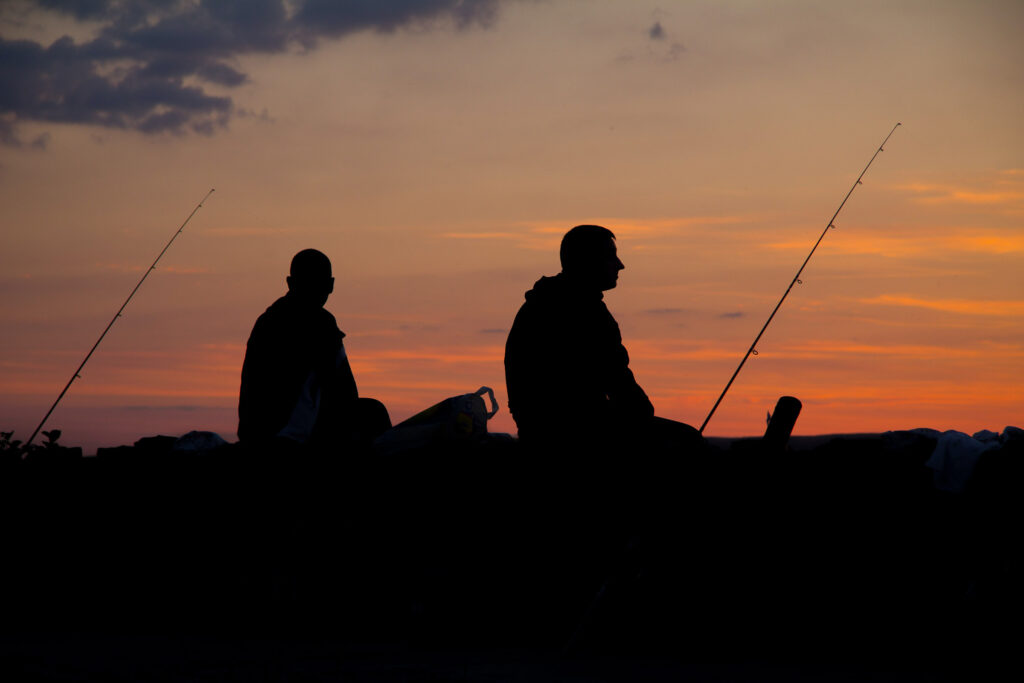
Even if the first official day of summer doesn’t occur until June 21, salmon anglers can still get a head start on spots to catch summer salmon in several marine areas of Puget Sound:
CHINOOK
One of the highlights is south-central Puget Sound (Marine Area 11 that runs from Vashon Island’s northern tip south to the Tacoma-Narrows Bridge) where hatchery-marked Chinook fishing opens June 1 and runs through September 30 or sooner if the catch quota is achieved. This June 1 opening is more than two weeks earlier than 2021, and prior to that, fishing had been closed during this timeframe since 2018. Most of these early summer migrating Chinook are headed for southern Puget Sound hatcheries, so chart a course in that direction. Look for salmon at the Clay Banks to Owen Beach off the northwest side of Point Defiance Park; the “slag pile” off the Tacoma Yacht Club; the “flats” outside of Gig Harbor; Girl Scout Camp in Colvos Passage; the ledges outside of Quartermaster Harbor; and Point Dalco on southwest side of Vashon Island.
Southern Puget Sound—Area 13 south of the Narrows Bridge—is open year-round. Look for early-summer hatchery Chinook lurking at Point Fosdick and off Fox Island’s east side at Gibson Point, Toy Point and Fox Point. This area blossoms in mid- to late-August as migrating summer and fall Chinook arrive in the Nisqually Delta Reach area, Anderson Island, and Johnson Point near
Olympia.
A fun additional note: The Tulalip Bay Bubble Fishery, just to the north of Everett, is already open for king salmon, also known as Chinook. Fishing is allowed each week from 12:01 a.m. Fridays through 11:59 a.m. Mondays only through September 7, and then weekends only from September 11-26. (In recent years, the Tulalip Bubble Fishery has also been fair to good for early-summer Chinook in the 10- to 20-pound range.)
The most effective fishing technique for Chinook is jigging, and the type of jig is usually a judgement call by the angler with one rarely outperforming the other. The Chinook bite is more reactive of whatever flashes in front of their face, so many prefer jigs like a P-Line Laser Minnow, Point Wilson Dart, Buzz Bomb, Dungeness Stinger, and Crippled Herring. Color is by preference although favorites are the glow, chartreuse, pearl-white, green-nickel, blue-pearl or blue-gold patterns. Store-bought jigs come with a treble hook, and take note: they’re illegal for salmon in Marine Areas 1 to 13. Only single-pointed barbless hooks and one line with up to two hooks may be used. Other anglers like to troll with plugs, spoons, and a plastic hoochie squid.
Keep in mind summer that Chinook are on a constant migration pattern and during early morning hours they can be found suspended in the upper and middle water columns. As the sun breaks over the horizon some fish tend to move into deeper water and often hang near the bottom. Other factors to success include locating baitfish schools at the proper depth and the tidal influence in a certain location. For example, on the early June 1 opener in Marine 11 the morning high tide is soft and occurs at 5:58 a.m. that date, so you’ll likely find a hot, but not so appealing, dogfish bite. Oddly enough, these pesky fish school and feed heavily on the softer tides. The best action for salmon should happen leading up to and right and shortly after the low tide change at 1:07 p.m.
COHO
Another popular early-summer fishery is the central Puget Sound—Marine Area 10—that opens June 16 through July 13 for resident coho. The past several years have been very productive for this fishery. The coho aren’t big, averaging 2 to 4 pounds, but are very snappy, fun to catch and are excellent table fare as their main diet are the abundant schools of krill (a microscopic, shrimp-like crustacean) that turn the coho flesh a bright red-orange hue. Top places are the shipping lanes between Jefferson Head and Kingston-Apple Tree Point area. Don’t overlook the rip currents off Richmond Beach; West Point south of Shilshole Bay; and Bainbridge Island from Point Monroe south to Restoration Point.
Trolling is the best way to catch coho using a downrigger set at depths of 30 to 80 feet with a trolling speed of 2.5 to 3.5 mph. For gear, attach a Gibbs Delta flasher (purple haze or moon jelly/green glow) on a 30-inch leader to a Silver Horde Gold Star white UV hoochie or an Ace Hi Fly Needlefish UV glow or purple haze hoochie and a small herring strip on the bottom hook.
Others prefer to simply drift or motor mooch using a whole or cut-plug herring (dogfish can be an issue here, too). Stick with a small red-label herring attached to a 30-inch tandem hook leader with a 3- to 6-ounce banana lead weight sinker.
In the next issue of the magazine, I’ll dive into July salmon fishing options as the list of opportunities continues to expand all summer long, and in the meantime, a full list of statewide marine and freshwater salmon fisheries can be found on the WDFW website at wdfw.wa.gov. I’ll see you on the water very soon!


